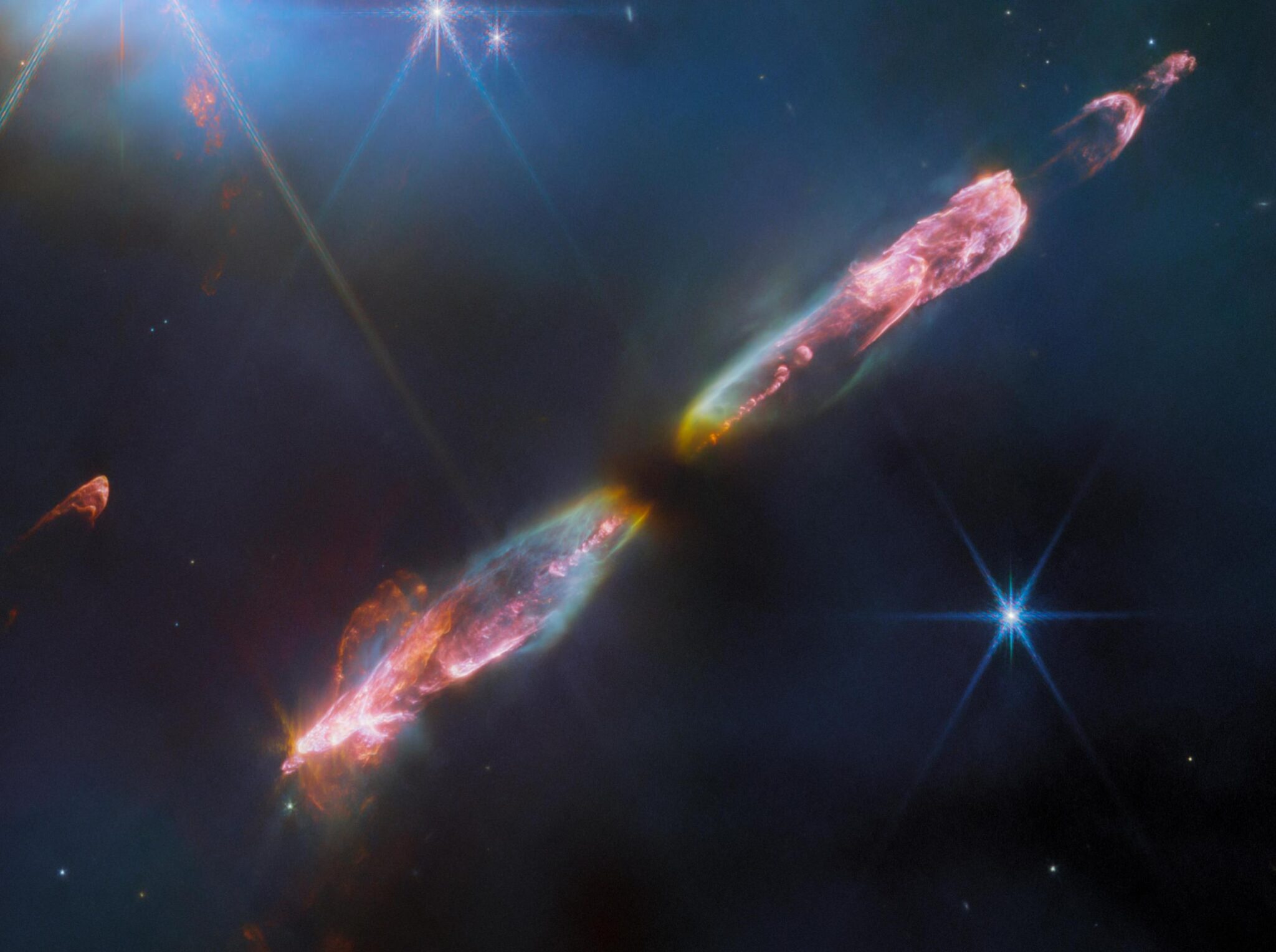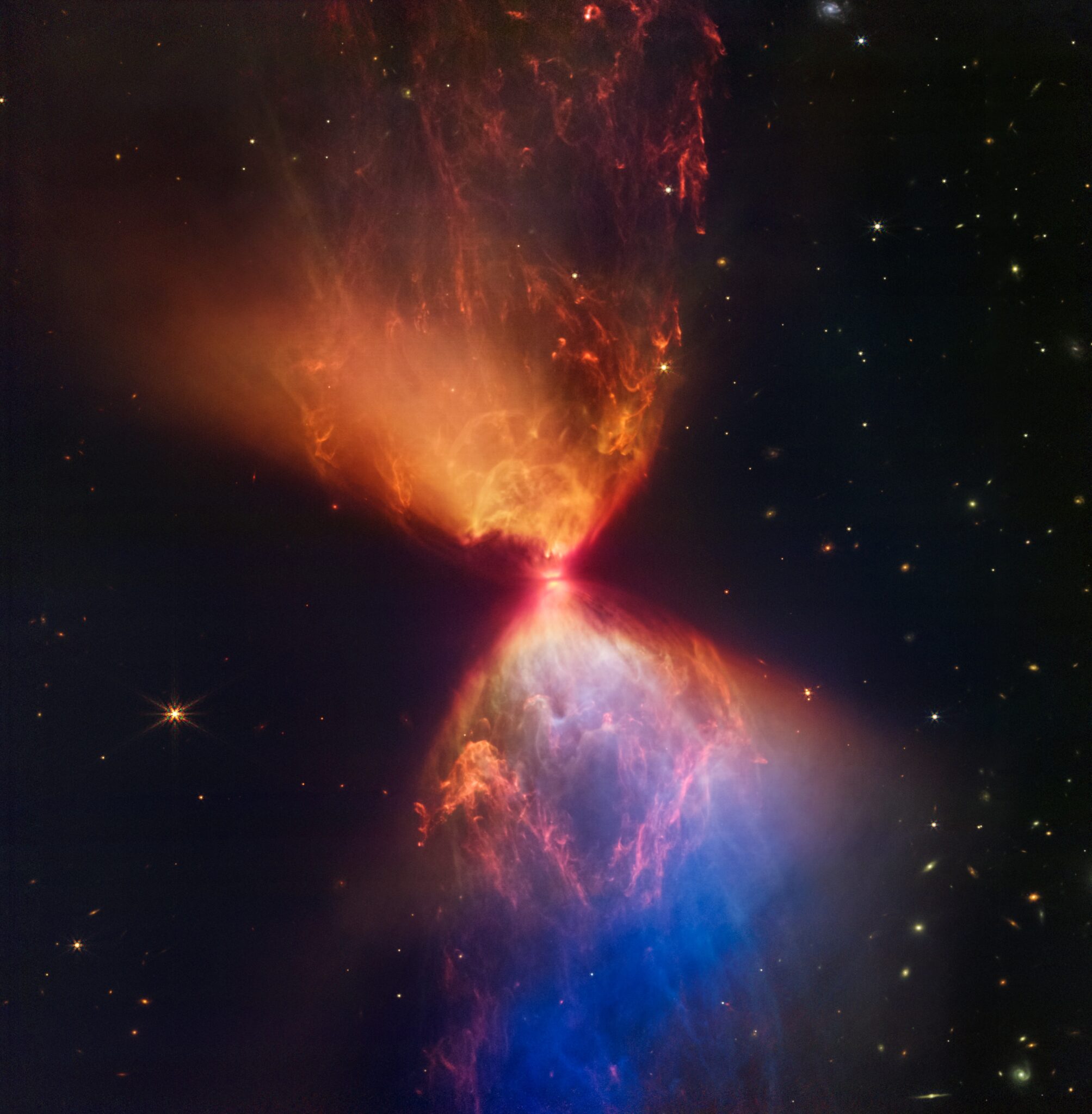The photograph taken by the James Webb Space Telescope reflects the foreground of the world drama – a young star that throws matter out in supersonic jets in a vast outer space. This fascinating and mysterious phenomenon, known as Herbig-Haro 211 or HH 211, reveals to us the youngest inhabitants of space who are actively forming their way of life.

Observations made with the James Webb Space Telescope (JWST) show these powerful jets of stellar matter that flare up and scatter in all directions from the poles of a young star. This cosmic phenomenon unfolds in the constellation Perseus, at a distance of about 1,000 light-years from Earth.
The jets fly out in opposite directions from the young star. The protostar, which weighs only 8% of our Sun, resembles our luminary in the past; when it was only a few tens of thousands of years old. Astronomers believe that over time it will develop into a star similar to our Sun. On August 28, 2022, the object was captured by Webb’s Near Infrared Camera (NIRCam), but the compiled image from these observations was published only today.
In this area of space, the protostar actively gathers the surrounding gas and dust, gradually increasing its mass. However, at the same time it throws matter into space in a process known as bipolar outflow. Acquiring volume and developing in outer space, jets of matter collide with interstellar gas and dust, forming bright, colorful vortices.

HH 211 is one of the youngest and closest examples of a newborn star erupting matter. Therefore, it is the ideal object for JWST research. Analyzing the data collected by the Near Infrared Spectrograph (NIRSpec) instrument on board JWST, the researchers realized that the jets from young stars move slower and are rich in molecules such as carbon monoxide, silicon monoxide and molecular hydrogen, compared to the jets that are ejected from old stars.
HH 211 belongs to a group of objects that are rapidly evolving. Gas vortices like HH 211 exist only a few years after their discovery and disappear, leaving behind empty areas of space, which are soon filled with new wonderful phenomena of the space.
So, JWST’s observation of HH 211 opens up new opportunities for studying the youngest and most mysterious phenomena in the Universe, revealing to us the secrets of young stars and their influence on the formation of outer space.
Earlier we reported on how astronomers observed the birth of a triple star system.
According to Space
Follow us on Twitter to get the most interesting space news in time
https://twitter.com/ust_magazine

